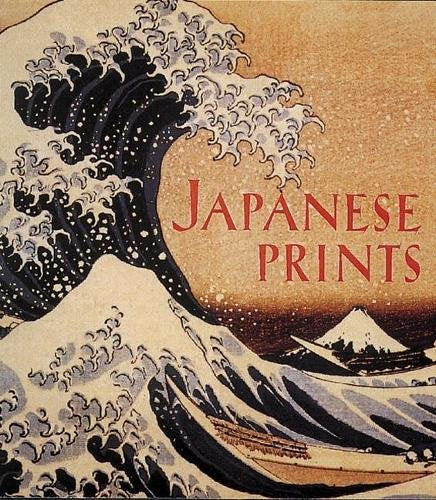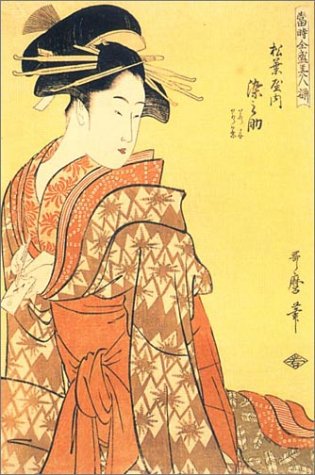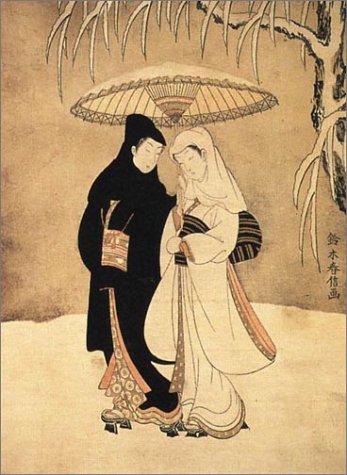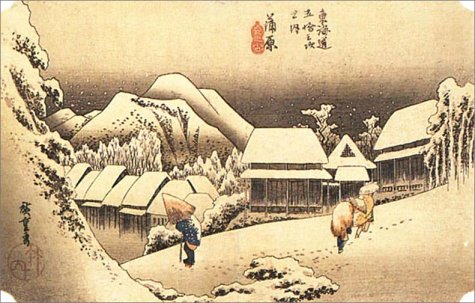Japanese Prints: The Art Institute of Chicago (Tiny Folio)
Japanese woodblock prints have been available to Westerners for slightly over one hundred years. For many, these works have supplied memorable visions of a complex, elusive, and exotic culture. Even when the artists’ names and the exact titles are unknown, the prints charm and inform. For most uninitiated viewers, the distinctions between Japanese art and the artistic traditions of China, Korea, and even Southeast Asia are blurred. But the Japanese print remains a comfortable point of recognition, particularly through a handful of popular images, such as Katsushika Hokusai’s Great Wave off Kanagawa (page 268).
The major collections of Japanese prints in Europe and America rival and often exceed, in quantity and quality, those found in Japan. A significant portion of Japan’s artistic legacy was exported, and its appreciation, both popular and scholarly, was conceded to the West. In 1854 Japan concluded a treaty with the United States that granted trade and fueling ports to the fledgling but ominously powerful Western nation. In short order, similar agreements were signed with Russia, England, and the Netherlands. Since the mid-seventeenth century, Japan had enforced an isolationism that allowed only a trickle of trade with the West. When it finally conceded to the West, Japan was in a state of political upheaval. Within two decades of the first Western incursions, a new form of government was in place. Ostensibly restoring imperial rule after centuries of shogun or military dictatorship, the new government was in fact evolving into a kind of constitutional monarchy. The imperial line remained a symbolic rallying point, but real power was distributed regionally and exercised through a parliament and a central bureaucracy. For the first time in more than two hundred years, Japan was exposed to a curious outside world. Having observed colonial exploitation throughout East Asia, Japan was intent on achieving economic and military parity with the count
Another in the Abbeville's Tiny Folios series, this little book is a real gem. The Art Institute of Chicago houses one of the world's most beautiful and comprehensive collections of Japanese woodblock prints in the world. Clarence Buckingham, of the famed Chicago family, donated 12,000 prints alone. The book covers this exquisite collection of work from the 17th to 19th centuries in four sections: Primitives, Courtesans, Actors, and Landscapes. It includes work by well-known masters such as Hiroshige, Hokusia, and Utamaro, as well as lesser-known talents such as Shun'ei, Shunko, and Kiyonaga. While the trim size is small, none of the subtle colors, delicate paper texture, or intricate fabric design is lost. Review "Another in the Abbeville's Tiny Folios series, this little book is a real gem.
The Art Institute of Chicago houses one of the world's most beautiful and comprehensive collections of Japanese woodblock prints in the world. Clarence Buckingham, of the famed Chicago family, donated 12,000 prints alone. The book covers this exquisite collection of work from the 17th to 19th centuries in four sections: Primitives, Courtesans, Actors, and Landscapes. It includes work by well-known masters such as Hiroshige, Hokusia, and Utamaro, as well as lesser-known talents such as Shun'ei, Shunko, and Kiyonaga.
While the trim size is small, none of the subtle colors, delicate paper texture, or intricate fabric design is lost." Amazon.com
"The small size of this title may not lend to easy library circulation but it makes an excellent and affordable gift: over 270 prints are reproduced in full color, selected from the Institute's collection of woodblock prints, and provides a fine range of works from the mid-seventeenth to the mid-nineteenth century. An excellent survey." Midwest Book Review About the Author James T. Ulak, formerly a curator at The Art Institute of Chicago, now lives in Washington, D.C. Excerpt. © Reprinted by permission. All rights reserved.
- Author: Ulak, James T.
- Brand: Ulak, James T.
- Binding: Paperback
- Number Of Pages: 320
- Publisher: Abbeville Press
- Release Date: 01-08-1995
- Details: Good Condition
- Package Dimensions: 9.1 x 6.6 x 1.1 inches
- Languages: English












